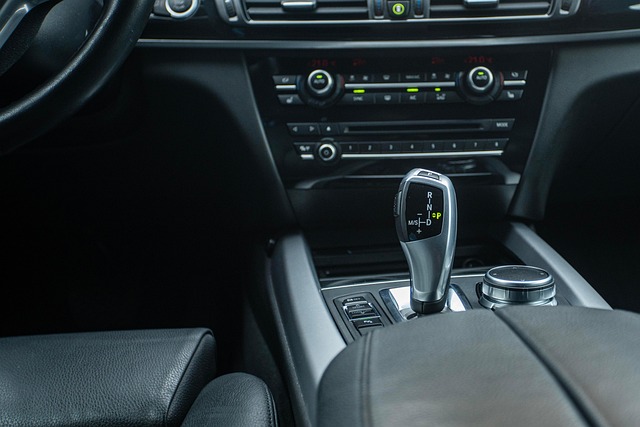Vehicle coverage (auto insurance) protects individuals and their vehicles from financial losses due to accidents or unforeseen events. Key components include liability, collision, and comprehensive coverage. Comprehensive insurance offers broad protection against various risks, providing peace of mind and safeguarding vehicle value over time. Exclusions vary by policy, so careful review is essential. Personal risk profiles and driving history should guide policy choices. Balancing cost savings with potential out-of-pocket expenses is crucial. Understanding the claims process ensures a smooth experience. Comparing quotes from multiple providers secures cost-effective, comprehensive vehicle coverage that enhances peace of mind on the road.
In today’s world, having full coverage for your vehicle isn’t just a consideration—it’s essential. Understanding what this means and how it protects you is crucial for making informed decisions about your auto insurance. This comprehensive guide dives into all aspects of vehicle coverage, from types of options available to the claims process. By exploring benefits, common exclusions, choosing the right plan, and saving on quotes, you’ll be equipped with the knowledge needed to navigate this vital aspect of car ownership.
Understanding Vehicle Coverage: What It Entails

Vehicle coverage, often referred to as auto insurance, is a safety net that protects individuals and their vehicles from potential financial losses resulting from accidents or other unforeseen circumstances. It encompasses a range of services designed to mitigate risks and provide peace of mind while on the road. The primary components include liability coverage, which shields policyholders from costs associated with damages caused to others in an accident, and collision coverage, intended to repair or replace the insured vehicle after a crash.
Comprehensive coverage, another vital aspect, covers various risks beyond accidents, such as theft, natural disasters, and vandalism. This ensures that vehicle owners are protected against unexpected events that could lead to significant financial strain. Understanding these nuances is essential when selecting an insurance plan that aligns with individual needs, ensuring adequate protection without unnecessary expenses.
Types of Full Coverage Options for Cars

When it comes to full vehicle coverage, several options cater to different needs and budgets. Comprehensive coverage is a popular choice that protects against various risks beyond the standard policy, including damage from natural disasters, theft, and vandalism. This type of coverage can be especially beneficial for high-value vehicles or those parked in vulnerable areas.
Additionally, collision insurance covers repairs or replacements when your car is involved in an accident, regardless of fault. It’s a crucial option to consider if you live in a busy urban area with frequent traffic. Many policies also offer liability coverage, which shields you from financial burden in case you cause damage to another vehicle or property during an accident. This type of protection ensures peace of mind and financial security, providing comprehensive vehicle coverage tailored to your specific circumstances.
Benefits of Opting for Comprehensive Protection

Opting for comprehensive vehicle coverage offers a multitude of benefits that go beyond just financial protection. It provides peace of mind, knowing your investment is safeguarded against unforeseen events like natural disasters, theft, or accidental damage. This type of coverage often includes perks such as roadside assistance and rental car coverage during repairs, ensuring you’re never stranded.
Moreover, comprehensive insurance can help maintain the value of your vehicle over time. It repairs or replaces damaged parts, preserving its condition and resale value. In addition, it typically covers personal belongings kept in your vehicle, offering additional security for your possessions. Comprehensive protection is a smart choice for responsible vehicle owners who want to be fully prepared for any eventuality on the road.
Common Exclusions in Vehicle Coverage Policies

Many vehicle coverage policies come with a range of exclusions, which are circumstances or events that aren’t covered under the policy. Understanding these exclusions is crucial when assessing full coverage for your vehicle. Common examples include natural disasters like floods, earthquakes, or severe storms, which are often excluded due to their unpredictable nature and high potential for damage. Additionally, policies usually don’t cover personal belongings left in a vehicle or theft that doesn’t involve physical force or violence.
Another significant exclusion is liability arising from certain activities, such as racing, drag racing, or using the vehicle for competitions or exhibitions. Moreover, if your vehicle gets damaged while it’s being driven by someone who isn’t listed on your policy as an authorized driver, this could lead to a claim denial. Policies may also exclude losses caused by neglect, meaning if you fail to follow recommended maintenance schedules and your vehicle breaks down due to wear and tear, insurance might not cover the repair or replacement costs.
How to Choose the Right Full Coverage Plan

When selecting a full coverage vehicle plan, start by evaluating your personal risk tolerance and driving habits. If you’re a safe driver with no prior accidents or violations, you might opt for a more basic plan offering standard limits. However, if you have a history of claims or drive in areas with high accident rates, consider opting for higher limits to ensure comprehensive protection.
Next, compare different policies based on their coverage details and exclusions. Look into specific types of vehicle coverage like collision, comprehensive, liability, and medical payments. Ensure the plan includes all necessary coverage for your needs, such as rental car reimbursement, roadside assistance, and deductibles that align with your budget. Additionally, review the insurance company’s reputation, customer service, and claims processing efficiency to make an informed decision regarding your vehicle coverage.
The Role of Deductibles and Their Impact

When considering vehicle coverage, deductibles play a significant role in the financial aspect of insurance. A deductible is the amount you agree to pay out-of-pocket for repairs or claims before your insurance provider covers the rest. Higher deductibles typically lead to lower monthly premiums, as insurers shift a larger portion of potential costs onto policyholders. This can be advantageous for drivers with good financial standing who can afford a higher upfront cost in case of an accident.
However, opting for a high deductible means accepting greater financial responsibility initially. It’s crucial to balance the trade-off between premium savings and the potential burden of a significant out-of-pocket expense during a claim. Understanding this dynamic is essential when selecting vehicle coverage to ensure you’re adequately protected while making informed financial decisions.
Claims Process: A Step-by-Step Guide

When it comes to vehicle coverage, understanding your claims process is vital for a smooth experience. Here’s a step-by-step guide to help you navigate the journey:
1. Accident or Damage Notification: The first step is to notify your insurance provider as soon as possible after an incident. This can be done through various channels like phone, email, or online forms provided by your insurer. Ensure you have all necessary details ready, including dates, times, and locations of the event, as well as details about other parties involved.
2. Document Everything: After the initial notification, document every aspect of the incident. Take photos of damage to your vehicle from different angles. Keep records of any conversations or communications with your insurance representative. Gather contact information of witnesses and any police report generated at the scene (if applicable). These documents will be crucial for supporting your claim.
3. File Your Claim: Next, file a formal claim with your insurer using the method they prefer—whether it’s through their website, mobile app, or over the phone. Provide all collected information and documentation to streamline the process. A claims adjuster will review your case and guide you further on the next steps, which may include scheduling an inspection of your vehicle.
4. Inspection and Assessment: During this stage, a qualified technician or adjuster from your insurance company will inspect your vehicle to assess the damage. They will provide an estimate for repairs, ensuring all costs are covered under your chosen vehicle coverage plan.
5. Claim Approval and Repairs: Once your claim is approved, you can proceed with necessary repairs. Your insurer may directly pay the repair shop or issue a check to you as the policyholder. Ensure that any work performed aligns with industry standards and that parts used meet required quality criteria.
Comparing Quotes and Saving on Auto Insurance

When shopping for vehicle coverage, comparing quotes is a savvy move that can save you significant money. Start by gathering insurance quotes from multiple providers offering full-coverage options tailored to your specific needs. Online platforms and comparison tools make this process efficient, allowing you to quickly assess policy details, price points, and the scope of benefits provided. Remember, cheaper isn’t always better; ensure comprehensive coverage that aligns with your vehicle’s value and drives safely habits for peace of mind behind the wheel.
